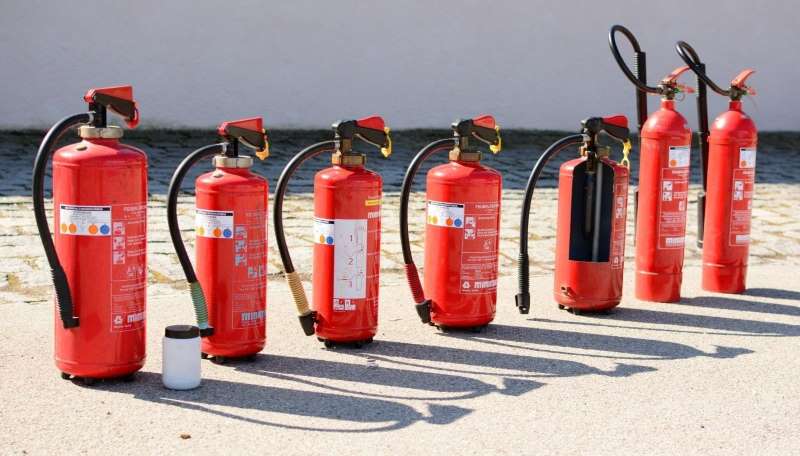 A fire occurs every 65 seconds. You will be caught in a fire sooner rather than later.
A fire occurs every 65 seconds. You will be caught in a fire sooner rather than later.
Protect yourself and buy a fire extinguisher. When you do, however, you may notice that there are different types available. This is for a good reason.
Here is a quick guide to fire extinguisher types.
Types of Fires
There are different types of fire extinguishers because there are different types of fires.
Class A fires involve solid combustibles, like wood, paper, and cloth. Class B fires involve flammable liquids, like oil, gasoline, and paint, while class C fires involve electrical equipment, appliances, and wiring.
Class D fires involve flammable metals, like sodium and potassium, though these fires are rare in homes. Class K fires are grease fires caused when vegetable oil and cooking fats overheat.
How to Fight a Fire
Three elements must be present for a fire to burn: a heat source, fuel, and oxygen. Remove any one of these three elements, and the fire will extinguish. Fire extinguishers work by removing one element.
Class A fires can be put out with water, which cuts off oxygen while reducing heat in the heat source. You can apply water directly to a class A fire, and you will put it out.
Burning oil or gasoline spreads thin, so class B and K fires cannot be put out with water. Smother or cover the fire with a non-flammable material, cutting off its supply of oxygen.
Applying water to class C fires may electrocute you. Cut off the electric current, then apply a non-conductive agent to cut off the fire’s oxygen supply.
If you do not have a specialized fire extinguisher, you should avoid a class D fire, especially in a confined space. Burning metals can release toxic chemicals or cause explosions.
Fire Extinguisher Types
Since class A fires can be extinguished with water, pressurized water dispensers are available. These dispensers have a red label with white letters to mark that they are for class A fires only.
Dry water mist extinguishers convert water into microscopic particles that suffocate flames. They can extinguish almost all types of fire, including grease fires.
ABC powder extinguishers use powder to cool the fire’s heat sources. They can be used for class A, B, and C fires, though ABC type fire extinguishers help extinguish electrical fires. All powder extinguishers have a blue label with white letters.
L2 powder extinguishers fight class D fires. L2 powder forms a crust on top of burning metal, smothering the heat source, and keeping the fire from spreading. L2 extinguishers can be used for all class D fires, but not for any other type.
Foam extinguishers administer water-based foam. They are suitable for class A and B fires only, and they have a cream label with red letters.
Carbon dioxide extinguishers use carbon dioxide to displace oxygen and suffocate the fire. They are used for class B and electrical fires, especially in offices. They have a black label with white letters.
Wet chemical extinguishers hose out special chemicals that dispel flames, cool the heating source, and seal flammable surfaces. They are best used for class K fires, though they can be used for class A fires. They have a yellow label with red letters.
Figure Out the Fire Extinguisher Types
Fires may be frequent, but you can be free from worry once you have an extinguisher. Familiarize yourself with the different kinds of fires, learn the three elements of fires, and then learn about the different fire extinguisher types. Think about the hazards in your home and office. Purchase the right fire extinguishers that can meet those hazards.
Remain informed on health and safety tips with this guide.




